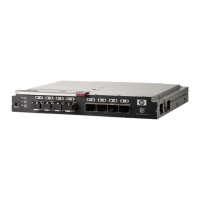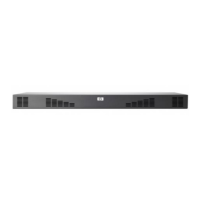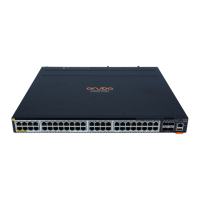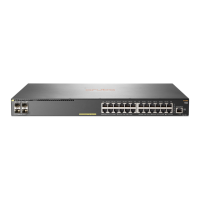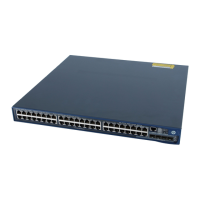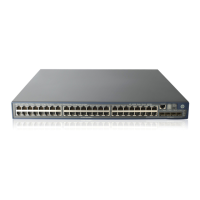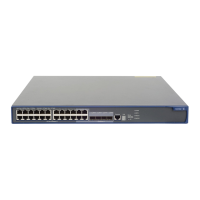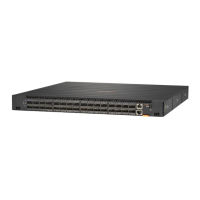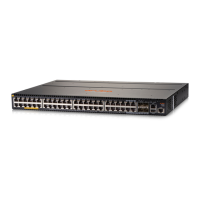26
Setting the IRF link down report delay
You can avoid link flapping causing frequent IRF splits and merges during a short time by configuring the
IRF ports to delay reporting link down events. An IRF port thus works as follows:
• If the IRF link changes from up to down, the port does not immediately report the change to the IRF
fabric. If the IRF link state is still down when the delay time is reached, the port reports the change
to the IRF fabric.
• If the IRF link changes from down to up, the link layer immediately reports the event to the IRF fabric.
Follow these steps to set the IRF link down report delay:
To do… Use the command…
Remarks
Enter system view system-view —
Set the IRF link down report delay irf link-delay interval
Optional
The function is disabled by default.
The recommended value range (in
milliseconds) is 200 to 500. The greater the
interval, the slower the service recovery.
Configuring MAD detection
You have the following MAD mechanisms for detecting multi-active collisions in different network
scenarios:
• LACP MAD
• BFD MAD
These MAD detection mechanisms operate independently, and you can configure all of them for an IRF
fabric.
Configuring LACP MAD
1. LACP MAD detection mechanism
With LACP MAD, an IRF member switch sends extended LACP data units (LACPDUs) with a type length
value (TLV) that conveys the domain ID and active ID of the IRF fabric for detecting an IRF split. The
domain ID uniquely identifies an IRF fabric in the network, and the active ID is identical to the member
ID of the master switch in the IRF fabric.
An IRF member switch compares the domain ID and the active ID in each received extended LACPDU
with its domain ID and active ID:
• If the domain IDs are different, the extended LACPDU is from a different IRF fabric, and the switch
does not continue to process the extended LACPDU with the MAD mechanism.
• If the domain IDs are the same, the switch compares the active IDs:
{ If the active IDs are different, the IRF fabric has split.
{ If the active IDs are the same, the IRF fabric is operating normally.
2. Network requirements
Every IRF member switch has a link with an intermediate switch, and all these links form a dynamic link
aggregation group, as shown in Figure 10.

